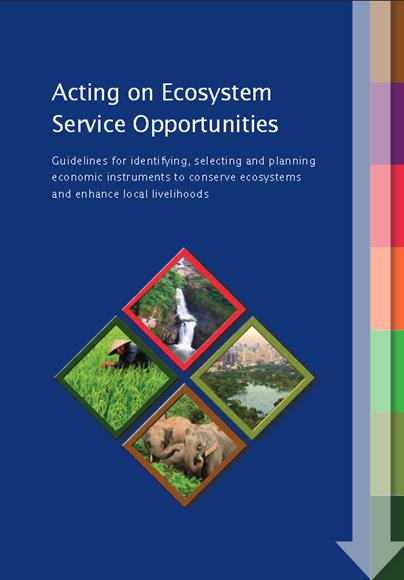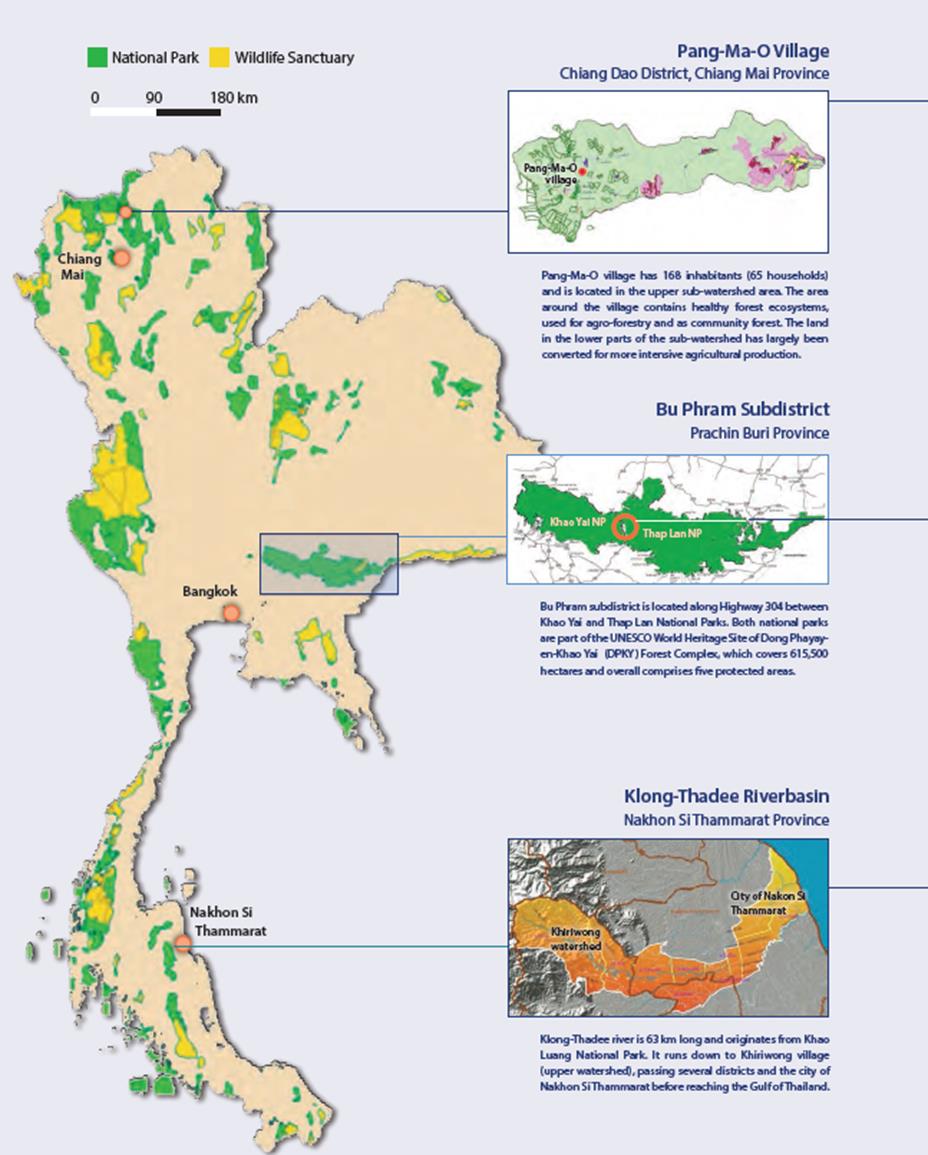ECO-BEST Thailand
Project leader
Heidi Wittmer
Employees
involved
Julian Rode
Duration
2011 − 2015
Budget total
1,335,000€
Funding agency
European Commission/ EU DG Devco
Project coordinator
Deutsche Gesellschaft für Internationale Zusammenarbeit (GIZ) GmbH
Project partners
Thai Department of National Parks
Wildlife and Plant Conservation (DNP)
Summary
ECO-BEST aims to reduce terrestrial biodiversity loss in South-East Asia for the benefit of local communities through enhancing economic and financial tools. The project has the following specific objectives:• Improve national enabling framework conditions for the use of economic and financial tools in Protected Areas and Buffer Zones;
• Strengthen on-the-ground conservation efforts in three pilot sites through the use of economic and financial tools as a South-East Asian model for effective management; and
• Build capacity, learning and information-sharing in the use of economic and financial tools through national and regional know-how transfer.
Role of UFZ
Support from an academic-conceptual perspective the identification and planning of appropriate economic instruments for conservation and local development.Develop guidelines for practitioners for identification, selection, and planning economic instruments.
Contributions to training workshops on local and national level.
ECO-BEST guidelines
Within the ECO-BEST project, the following guidelines were developed, available for download here:

The guidelines provide a detailed, step-by-step ‘how to’ guide for identifying and planning an economic instrument for conservation and for sustainable local development. The focus is on involving communities in areas with high biodiversity or important ecosystems and enhancing their stewardship role.
Economic instruments can motivate people to change their behaviour in favour of more sustainable outcomes. The guidelines demonstrate how to identify opportunities to use economic instruments by considering four key economic principles: ‘Steward Earns’, ‘Beneficiary Pays’, ‘Polluter Pays’, and ‘Innovation’. They subsequently assist in designing and implementing the selected instruments.
The primary audience for the guidelines is the technical staff, consultants, and researchers who will actually be involved in working through the steps and tasks on the ground.
Videos
Short videos on the economic instrument development in two of the pilot sites are available here:
Bu Phram (4 min)
Bu Phram (20 min)
Thadee (1 min)
Thadee (17 min)

Publications
Rode, J., Wittmer, H., Emerton, L., Schröter-Schlaack, C. (2016), ‘Ecosystem Service Opportunities’: a practice-oriented framework for identifying economic instruments in order to enhance biodiversity and human livelihoods, Journal for Nature Conservation 33, 35-47.
Rode, J., Wittmer, H. (2015), Acting on Ecosystem Service Opportunities – Guidelines for identifying, selecting and planning economic instruments to conserve ecosystems and enhance local livelihoods, Helmholtz Centre for Environmental Research GmbH – UFZ , Leipzig, URL: www.ufz.de/index.php?de=34602)
Rode, J., Eawpanich, P. (2018), Improving the wildlife corridor between Khao Yai and Thap Lan National Parks (Thailand), VALUES Case Study, Gesellschaft für Internationale Zusammenarbeit
(GIZ).
www.es-opportunities.net
